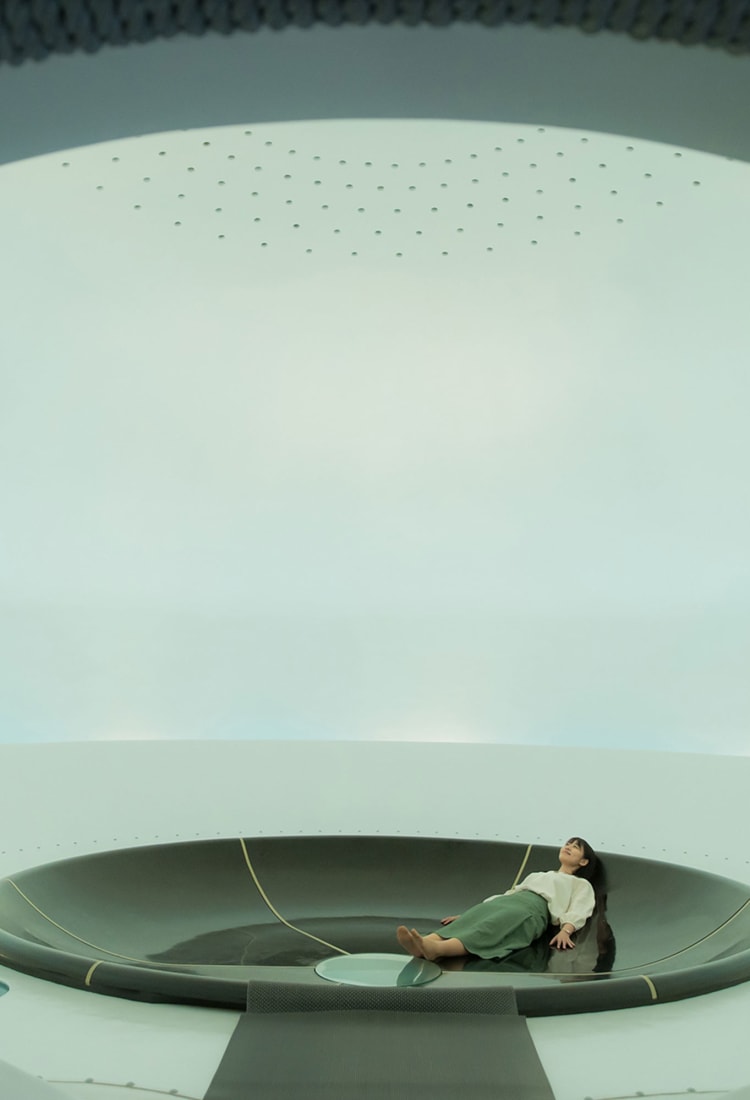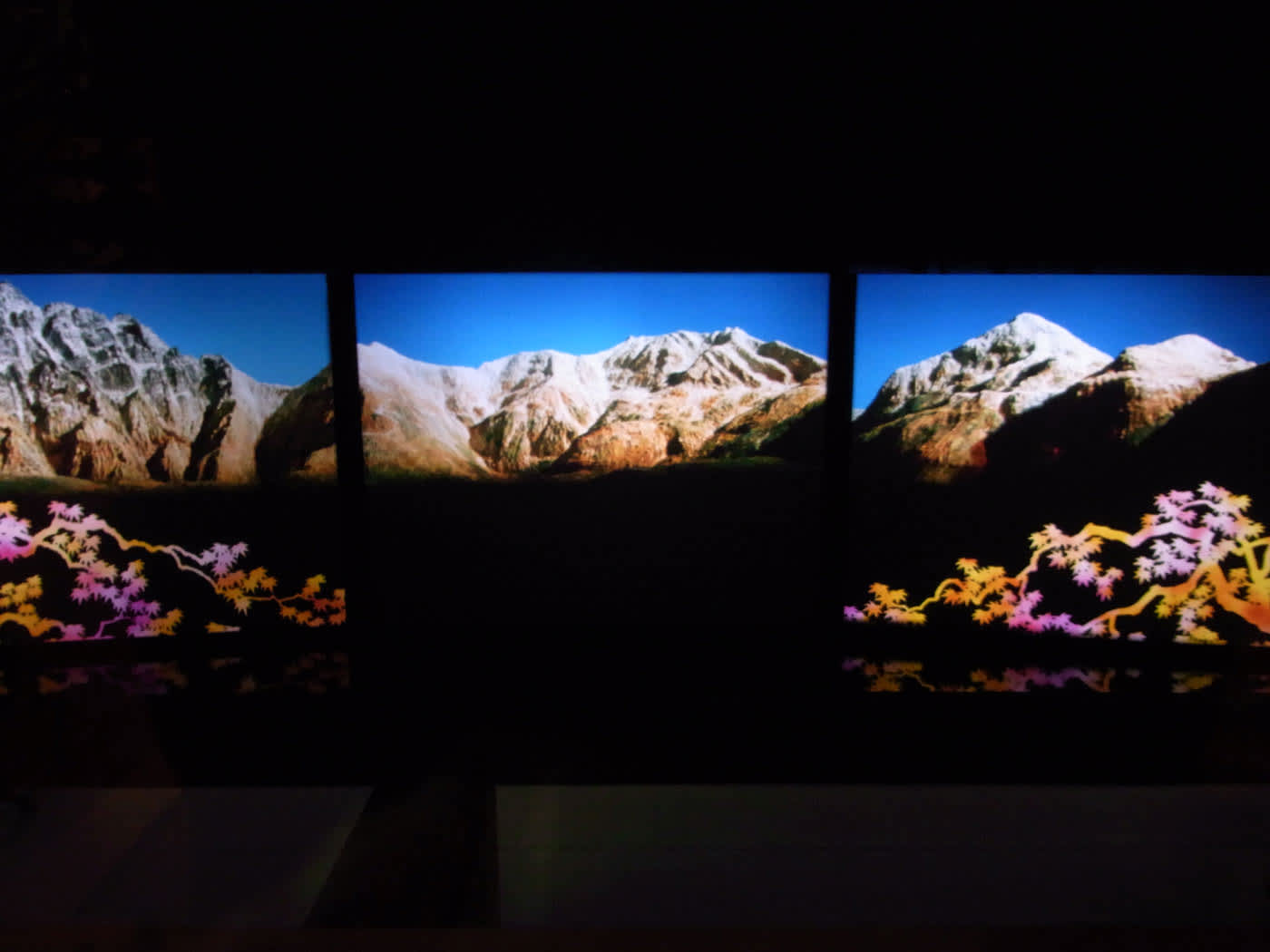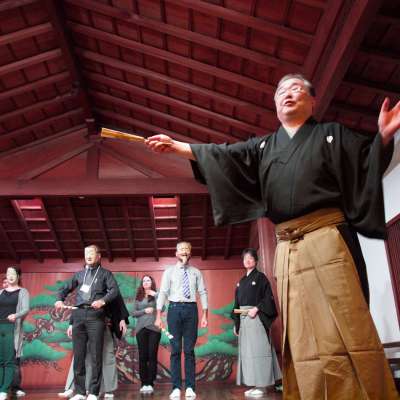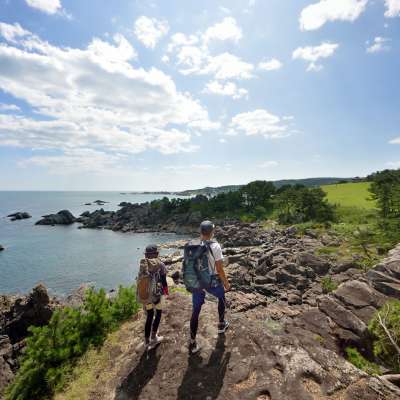
2024.12 Mountain Worship in Tateyama: A Fusion of Nature and Faith
The Tateyama Museum provides visitors with an immersive experience, offering deep insights into the history and beliefs of Tateyama worship. Within the Tateyama area, visitors can also explore the Tateyama Kurobe Alpine Route, rent climbing equipment, and shop for local specialties at Tateyama Machinaka Farm.
Explore Tateyama, a place of mountain worship

Hire an electric-assisted bicycle to explore Tateyama and its surroundings.
The town of Tateyama, Toyama Prefecture is the gateway to the Tateyama Kurobe Alpine Route, a stunning journey open to visitors from April to November that runs approximately 90 kilometers eastwards through the North Japan Alps. The route takes in memorable scenes such as ancient forests with 1,000-year-old trees and the iconic snow walls of Murodo that typically last from April to June.
The entire Tateyama Kurobe Alpine route requires multiple modes of transportation to complete from cable cars to buses, but in Tateyama town, one of the best ways to explore is by renting an electric-assisted mountain bike to traverse the area’s hilly terrain. Bicycles can be rented from several places in Tateyama including the Tourist Information Center close to Tateyama Station.
The Tateyama area has some interesting sites to discover in addition to the Tateyama Museum of Toyama such as the Oyama Shrine Chugu Kiganden, a peaceful location surrounded by towering cedar trees more than 500 years old.
Another interesting stop is the Tateyama Shrine Road, an ancient route that worshippers of the mountain followed during Japan’s Edo Period (1603–1867) on their way from Iwakuraji Shrine to Murodo. The route is marked by stone Buddha statues that became signposts for the worshippers and although not all the statues remain today, some can still be seen in Ashikuraji, a small village just below the Tateyama Caldera.
Tateyama is also home to the Tateyama Caldera Sabo Museum which introduces visitors to the natural environment and history of the Tateyama Caldera, a hollow of collapsed land formed through volcanic activity and erosion.
For a more hands-on experience, the Etchu Ceramics Village Tounokan facility celebrates the culture of the locally-made Etchu Seto ceramicware that has a history dating back more than 400 years. Visitors can make reservations in advance for workshops for their hand-shaped pottery course or ceramics painting experience.
Immerse yourself in the spiritual world of Tateyama

Learn about the connection between humans and nature at the Tateyama Museum of Toyama.
The Tateyama Museum of Toyama is one of Tateyama’s main attractions and is dedicated to exploring the relationship between humans and nature in Tateyama. The expansive grounds are divided into three sections, the teaching zone, the sacred zone, and the play zone. One of the unique aspects of the museum is that the vastly spread-out exhibition facilities blend seamlessly with the surrounding landscapes.
The museum’s highlights course is a good introduction to the complex and takes around two to three hours to complete. It focuses on the main facilities of the Tateyama Museum including the Tenjikan (Exhibition Hall) and the Mandala Yuen.
The route begins at the Tenjikan (Exhibition Hall) where visitors will find a museum shop, a special exhibition room on the first floor, and a permanent exhibition room on the third and second floors.
The two permanent exhibition rooms explore Tateyama's relationship with nature and people, and the special exhibition room hosts temporary exhibitions twice a year. Exhibition Room 1, The Stage of Tateyama Worship , introduces visitors to Tateyama’s natural environment and is split into different zones.
The exhibits showcase the unique natural features of Tateyama, including the beech forests of Toyama's mountains, the Hida metamorphic rocks that shape much of the landscape, and volcanic craters like “Jigokudani” (Hell Valley), Mikurigaike Pond , and Chinoike (Blood Pond) . These dramatic landscapes were once believed to resemble the underworld, giving rise to the ancient concept of "Tateyama Hell."
Exhibition Room 2, The World of Tateyama Worship, is divided into two main parts: the first half is an exhibition that allows visitors to learn about the Tateyama Worship experientially by making full use of models and videos. The second half is an exhibition that allows visitors to deepen their understanding of the Tateyama Worship through materials such as the Tateyama Mandala.
The Tateyama Mandala are religious paintings that depict the significant elements of the Tateyama Worship, and the museum is home to reproductions of these paintings that represent scenes of hell and paradise.

Learn more about Tateyama’s nature in the museum’s teaching zone.
After exploring the Exhibition Hall, visitors can experience the world of Tateyama's nature and the Tateyama Mandala in the Yobokan theater, a video hall featuring a large 3-sided multi-screen and sound system.
Two films are shown here, New Tateyama Mandala Picture, which introduces the Tateyama Worship in an easy-to-understand manner, and Tateyama 1990, which introduces the nature of Tateyama. The Japanese term mandala refers to images used to help people visualize and connect with different aspects of Buddhist cosmology.

Engage five senses at the immersive Mandala Yuen.
At the Mandala Yuen, visitors can engage all five senses to experience the world of Tateyama Mandala, including a simulation of heaven and hell. The immersive journey begins with a powerful depiction of the underworld as illustrated in the Tateyama Mandala. Here, visitors must make their way through demon corridors, avoid hungry demons, and cross the Spirit Bridge which juts out over the Joganji River. (The garden is closed during the winter months between December and March).
After successfully escaping the underworld, the nature of Tateyama awaits visitors at the Tateyama Climbing Trail route which represents climbing Mt. Tateyama. A series of objects can be seen here that represent the legends and folktales associated with climbing the mountain.
The next section of Mandala Yuen leads visitors to a serene, heavenly realm, inspired by scenes from the Tateyama Mandala. The journey continues into the Heavenly Cave, where seven artists have crafted unique installations, each representing their interpretation of the celestial world. In an egg-shaped room, visitors can lie down and immerse themselves in sound vibrations, evoking a meditative experience reminiscent of being in the womb.
The final part of Mandala Yuen leads visitors to the road from heaven back to the real world in an experience where all five senses are engaged. For example, a pitch-black corridor requires visitors to focus on the sounds of their footsteps and the feelings of sand and gravel beneath their feet.

Take a guided hike of the Tateyama Kurobe Alpine Route.
Guided hikes for your peace of mind
One of the best ways for visitors to experience Japan's mountain worship culture is to try climbing the mountain themselves. Although Tateyama is usually referred to as one mountain, it actually has three peaks, with Oyama as its most famous, though it's only the second highest. The convenient location and relatively easy ascent make Tateyama a very popular hiking destination during the warmer months from July to September.
Most visitors access the Tateyama peaks from Murodo via the Tateyama Kurobe Alpine Route. The Tateyama Kurobe Alpine Route offers a full range of guiding services that includes beginners in mountaineering, and climbing equipment is also available to rent. Hiking with a guide who has extensive knowledge of the mountain terrain gives less experienced climbers peace of mind during the hike and provides them with local insights for a richer experience.
There are also a variety of hotels near Tateyama Station that are easy to access, as well as mountain villas and hotels with hot spring facilities to relax in after a long walk.
Find souvenirs for daily use
In the villages of the Shinseto area of Tateyama town, famous for their historic kiln sites, visitors can purchase Etchu Seto ware, including plates and tea utensils, designated as traditional crafts of Toyama Prefecture, the perfect souvenirs to bring home.
In Tateyama, the fusion of nature, faith, and centuries-old traditions offers visitors a truly unique experience in rural Japan. From the spiritual journey through the Tateyama Museum and Mandala Yuen to the breathtaking scenery of the Tateyama Kurobe Alpine Route, this sacred region reveals the deep connection between humans and the natural world. Whether hiking the mountain terrain, exploring the museum's rich exhibits, or enjoying local specialties, Tateyama has a fascinating heritage waiting to be discovered.
Information
TATEYAMA MUSEUM of TOYAMA. Toyama Prefecture |
Tateyama Kurobe Alpine Route |
























































